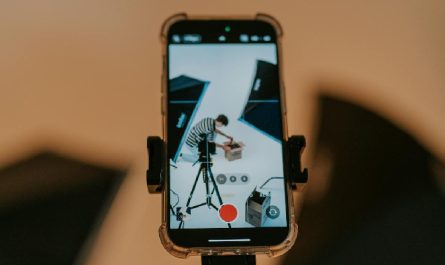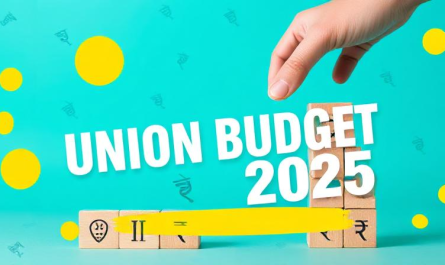Introduction
Great brands aren’t just bought—they’re chosen again. In crowded markets, strategic positioning for consumer loyalty is the difference between a one-time purchase and a reflexive repeat. Get the position right and every ad, shelf, and scroll starts pulling in the same direction. Get it wrong and you’re running in place.
Why this topic matters now
Loyalty is wobbling. Price pressure is pushing people to switch brands: in 2025, 60% of consumers reported switching from brands they were loyal to because of cost considerations. SAP Emarsys Consumers also bristle at tactics that feel exploitative—68% say dynamic pricing makes them feel taken advantage of—which means trust and clarity must live inside your positioning, not just your promotions. Gartner At the same time, expectations for relevance soared: Salesforce finds customers who feel “treated like unique individuals” jumped from 39% (2023) to 73% (2024)—proof that sharp positioning + consistent experience is the new table stakes. Salesforce
There’s also a budget reality: marketers talk long-term brand growth, yet many still over-tilt to short-term spend—even though 42–76% of campaign sales impact is long term depending on category. NIQ When money is tight, a crisp position is the multiplier: it concentrates every rupee behind an idea customers can remember, prefer, and pay for.
What “strategic positioning” actually means (and what it isn’t)
Positioning is the specific mental space your brand aims to own: the unfair advantage you anchor to a core human/job tension, expressed through distinctive assets and proven consistently across the journey. It’s not a tagline, a category descriptor, or a deck of adjectives. It’s a promise + proof system.
- Promise: the value you’ll reliably deliver for this audience in this context.
- Proof: product truths, pricing logic, service design, and evidence that make the promise credible.
- Distinctive assets: name, colors, sonic cues, shapes, RTB language people can spot in 0.5 seconds.
When this system is tight, loyalty is less about points and more about preference.
What the data says about loyalty levers
- Price vs. value: price sensitivity is real (the 60% switching stat above), but positioning that reframes value—quality, durability, or time saved—buffers discount pressure. SAP Emarsys
- Values fit: values alignment is increasingly decisive in loyalty choices (rising since 2021), particularly among younger buyers who want a brand’s stance baked into the offer, not tacked onto comms. blog.brandmovers.co.uk
- Program design: loyalty programs work best when integrated with positioning and pricing strategy—not bolted on. (McKinsey highlights value unlocked when loyalty and pricing are designed together.) McKinsey & Company
- Brand vs. performance: marketers still underinvest in brand building despite long-term impact carrying up to 76% of sales effect in some sectors. Positioning is the compass for those long plays. NIQ
A simple framework: Position → Translate → Prove → Repeat
Position
Choose one owning idea at the intersection of:
- Category entry points (when/where people think of buying),
- Real product advantage, and
- Distinctive memory cues you can sustain for years.
Toolbox: category mapping, occasion audits, jobs-to-be-done interviews, and an audit of distinctive assets (how fast can a stranger spot-you from a blur?). Kantar’s BrandZ analyses show that brands with strong, consistent meaning and difference top value rankings year after year—consistency compounds. Reuters+2Kantar+2
Translate
Turn the position into behavior across the journey:
- Pricing & promo: Ensure promotion logic reinforces the promise (don’t teach people to wait for deals if your position is “worth it, always”).
- Product & service design: Bake proofs into the experience customers actually feel.
- Comms system: Build a language kit and asset kit; instruct every channel to use them.
Prove
Show receipts:
- Evidence in every touchpoint (comparative claims, testimonials, standards).
- Design loyalty as proof, not bribery (tiers and experiences that deepen the core promise). Gartner notes CMOs must defend loyalty investment with tangible value delivered—so build measurement in at the design stage. Gartner
Repeat
Refresh assets and proofs, not the central idea. Distinctive consistency is what earns memory and, eventually, habit.
From positioning to loyalty: five practical moves you can ship this quarter
Map loyalty moments tied to your position. If your position is “effortless,” then speed, setup time, and resolution SLAs are the loyalty engines—not just points.
Rewrite your benefit ladder into three talkable claims. One emotional, one functional, one social. Your CRM and retail media can rotate these without diluting the core.
Audit promotions against the promise. Kill promos that contradict your position (e.g., heavy discounting on “premium craft”).
Design your program as a proof engine. Link tiers to experiences that prove the position (e.g., early access to better-made drops proves quality; concierge setup proves “effortless”). Real-world: fashion retailers launching new programs see lifts in awareness, traffic, and conversion when the program ties to the brand idea, not just points. The Australian
Track the right KPIs. Pair short-term metrics with long-term ones (brand search, unprompted awareness, repeat rate). Nielsen/NIQ remind leaders that a big slice of impact accrues over time; measure it or you’ll cut the very thing that drives loyalty. Nielsen+1
Category cues and cultural fit (because context wins)
Positioning lives inside culture. In Asia’s premium segments, loyalty increasingly flows to brands that deliver craftsmanship, meaningful experiences, and local storytelling—not just logo power. That’s a positioning cue: elevate quality proofs and service rituals people can feel. Vogue
How we operationalize this at Clevertize
We start with a working position (one line, three proofs), validate it against real category entry points, and translate it into a media + content system. Then we test executional variants (hooks, formats), not the core idea—because shifting the idea every quarter kills loyalty memory. If you need an on-ground partner, an integrated marketing agency in Bangalore can connect positioning to media, CX, and analytics. Building a West-India footprint? Shortlist marketing agencies in Mumbai that can produce culturally on-point assets fast.
Positioning templates you can copy and adapt
Value-Reframe (good for commoditized categories)
- For [who has X trade-off], we are the [brand] that makes [core task] feel [emotion] by [non-obvious proof].
- Example angle: “Worth-it everyday basics” proved by durability tests + refresh guarantees.
Time-Back (good for service/software)
- For [overloaded segment], we are the [brand] that returns [time] by [automation, concierge, defaults].
- Proofs: setup in <15 minutes, 24-hr resolution SLA, auto-migration.
Craft-Led Premium (good for D2C/premium FMCG)
- For [taste-driven buyers], we are the [brand] people trust for [enduring quality], because [materials/process/origin].
- Proofs: Maker notes, lot numbers, lifetime service.
Confidence-Through-Clarity (good for finance/health)
- For [anxious decision], we provide [simple path], through [transparent pricing+plain-language flows].
- Proofs: price locks (to counteract dynamic-pricing distrust), progress trackers, independent certifications. Gartner
Content system: what to publish to reinforce your position
- Origin stories that tie proofs to people (founders, designers, R&D).
- Comparative explainers that show why your choice is better (be specific).
- Post-purchase rituals (care guides, usage unlocks) that reward second and third uses.
- Community validation (UGC with guidelines so assets remain distinctive).
If you’re set up for multi-city growth, coordinating this through an integrated marketing agency in Bangalore and partner marketing agencies in Mumbai keeps story + assets consistent as you scale.
Conclusion
A brand that lasts is a brand people can summarize in a sentence—and verify in an experience. When your strategic positioning for consumer loyalty is precise, your pricing, programs, and creative stop arguing and start compounding. That’s how preference survives promotions, macro swings, and the next shiny thing. 🚀
Does this interest you? Connect with us to see how we can help you!
10 FAQs
What is strategic positioning for consumer loyalty?
It’s choosing the mental space you’ll own and proving it consistently so customers prefer you by reflex—not just for a deal.
How do I know my positioning is working?
Look for rising brand search, repeat rate, unprompted awareness, and lower paid reliance over time. NIQ/GfK show much impact accrues long-term—track it explicitly. NIQ
Do loyalty programs still matter?
Yes—but only when they prove the position (e.g., early access for quality, concierge for effortlessness) and integrate with pricing. McKinsey & Company
How do I balance price pressure with loyalty?
Reframe value with clear proofs; don’t train people to wait for discounts. Cost-driven switching is high in 2025, so value clarity is critical. SAP Emarsys
What if my competitors copy my messaging?
Own distinctive assets (color, shape, sonic cues) and concrete proofs competitors can’t match quickly.
How often should positioning change?
Rarely. Refresh assets and proofs quarterly; revisit the core position only if the category or product truth fundamentally shifts.
Which KPIs should my CFO see?
Short-term ROAS + long-term indicators (brand search, base sales, repeat rate). NIQ/GfK quantify the long tail of impact. NIQ
How do I address distrust around pricing?
Publish price logic, consider price locks, and align promotions to your promise; consumers resent opaque dynamic pricing. Gartner
What content formats reinforce positioning best?
Comparatives, origin/process stories, usage rituals, and community validation. Tie each to a proof.
Who should lead this work?
A brand owner with P&L accountability, plus CX, media, and analytics. For execution at speed, partner with an integrated marketing agency in Bangalore and trusted marketing agencies in Mumbai for cultural production.
Some of the services that Clevertize provides are:
Creative Services, Performance & Digital Media Marketing, Visual Identity & Branding, Campaign Management & Analysis, UI/UX & Website design, Video creation, Media planning & buying, Chatbot & more.
If Return on Investment is critical for you, talk to Clevertize!
Reach out to us at saumya@clevertize.com!





